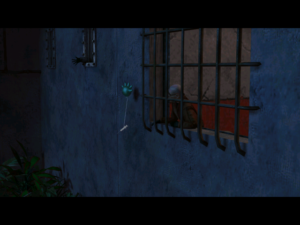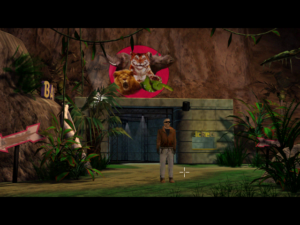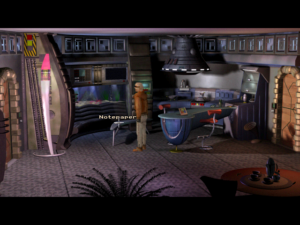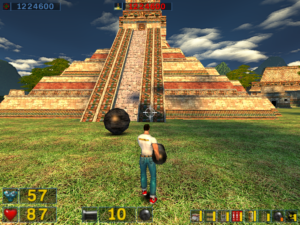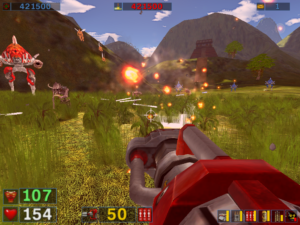Throne of Darkness: Slow Progress
 I mentioned recently that the most numerous game genre on my stack was adventure games, but RPGs are a close second, thanks largely to anthologies. I’ve got the majority of the Wizardry and Final Fantasy series ahead of me, as well as the entire Might and Magic series. (Ultima I finished some time ago.) So, I think I should try to finish up Throne of Darkness so I can start a different RPG without feeling like I’m neglecting it.
I mentioned recently that the most numerous game genre on my stack was adventure games, but RPGs are a close second, thanks largely to anthologies. I’ve got the majority of the Wizardry and Final Fantasy series ahead of me, as well as the entire Might and Magic series. (Ultima I finished some time ago.) So, I think I should try to finish up Throne of Darkness so I can start a different RPG without feeling like I’m neglecting it.
When last we left our band of intrepid samurai, they had just gotten through the dungeons under Tsunayoshi’s castle, and were getting killed a lot. They’re getting killed somewhat less now, due to a combination of more XP, better tactics (I’m swapping out wounded characters sooner, and trying to make sure I always have a combination of melee and ranged characters out), and better equipment. Some of the equipment is crafted, but I’m finding crafting to be something of an exercise in frustration at this point: the moment I make myself an Ultimate Weapon, costing half my gold or more, I find a new previously-unseen component that would make it even better if there were any free slots left. Perhaps the better approach to crafting in this game is to just make little improvements to whatever you find.
Even though I’m within spitting distance of the final confrontation, I’m taking things slow. This seems to be the best way to approach this game: going through the castle level by level, room by room, taking the time to process your loot after each room you clear and at the same time letting everyone heal. Impatience gets you killed. I’ve even toyed with leaving the castle to explore the unexplored paths down the mountain, since the last Single Quest is presumably out there somewhere.
And, really, taking things slowly is kind of the right way to play RPGs, MMO or otherwise. To rush to the end is to miss the point. Experience farming is a meditative practice, similar in a way to “casual” games like Bejewelled: simple, repetitive, only partly engaging one’s attention. It’s something you can rest your mind on.
This is pretty much the opposite of the attitude I took the last time I wrote about this game. What can I say, it’s spring now.
 Comments(3)
Comments(3)